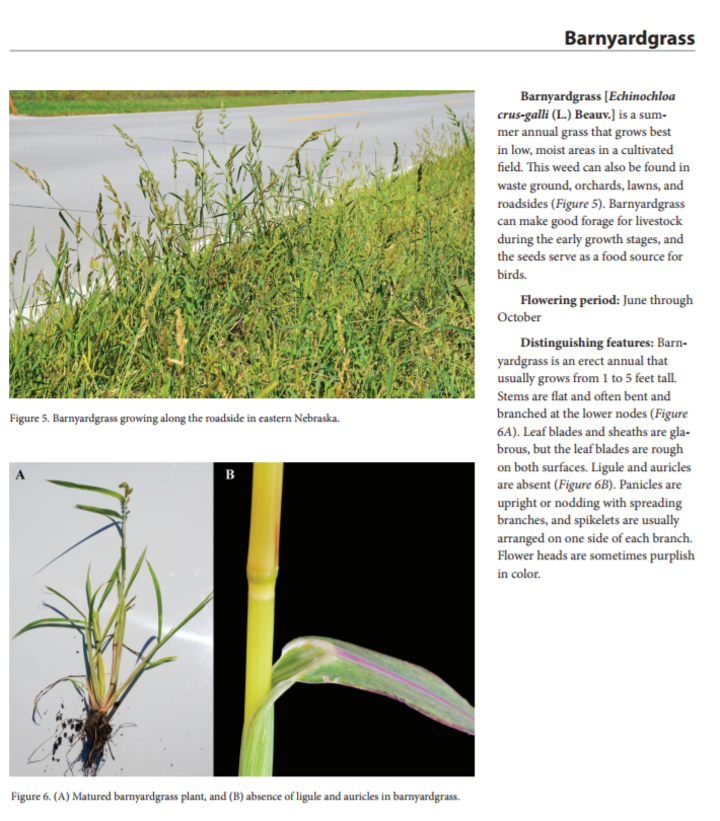Properly identifying weed species during their early growth stages can be difficult, but will lead to a more effective management plan.
A new Nebraska Extension circular, Identification of Grass Weeds Commonly Found in Agronomic Crops in Nebraska (EC3020), offers general diagrams of grassy plant structures and information on life cycle, habitat, flowering period, and distinguishing features of 12 grasses common to Nebraska fields. Photos of key identifying features for each grass aid identification. Featured grasses are annual blyegrass, barnyardgrass, Canada wildrye, downy brome, foxtails, Johnsongrass, jointed goatgrass, large crabgrass, longspine sandbur, shattercane, wild oat, and wild-proso millet.
In this excerpt, the publication authors—Debalin Sarangi, weed science postdoctoral research associate, and Amit Jhala, Extension weed management specialist—write of the importance of early weed identification and control:
"Although grass weeds, specifically during their early growth stages, are difficult to identify, growers cannot wait until flowering to control them. Delayed herbicide application leads to increased early season crop-weed competition and reduced control of larger weeds, which negatively impacts crop yield. Early identification of grass weeds can also help in selecting weed management operations. For example, johnsongrass, a perennial weed, produces rhizomes (root-like structures with a modified underground stem that grows horizontally and produces roots and shoots from its nodes); implementing moderate tillage can spread this weed species. Therefore, a more appropriate weed management operation would be to apply systemic herbicides at the early growth stages."
Given grass weed identification and management are often most effective when weeds are small, the authors recommend using a hand or pocket lens with 10× magnification to improve identification.

